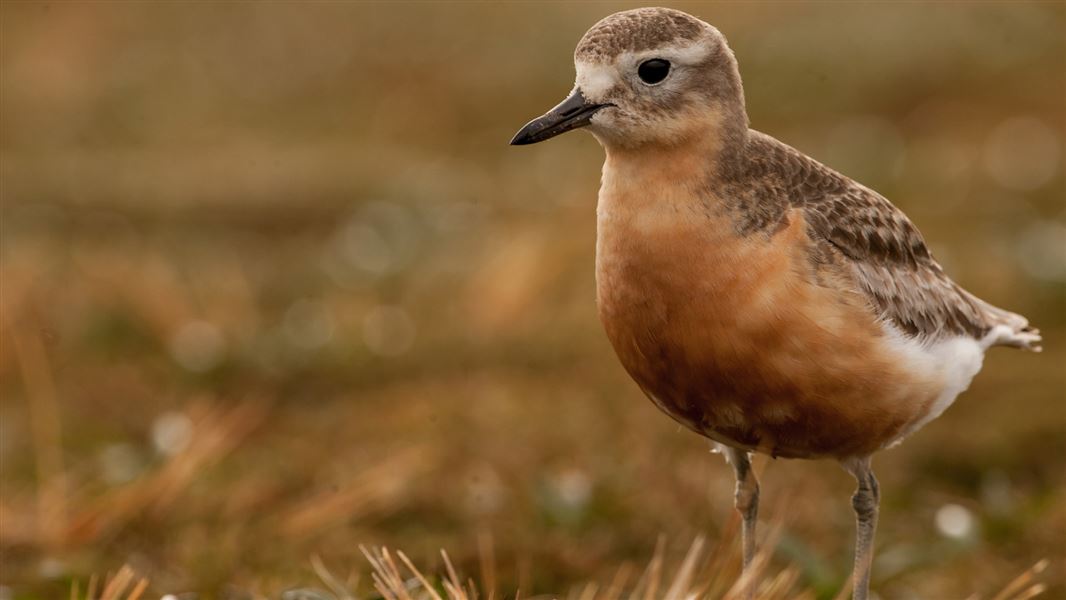Brochures:
The Northern New Zealand dotterel/tūturiwhatu is found in coastal areas around parts of the North Island.
The critically endangered Southern New Zealand dotterel/pukunui only breeds on Stewart Island/Rakiura.
About dotterels
The New Zealand dotterel (Anarhynchus obscurus) is a threatened shorebird.
There are two distinct subspecies, with widely separated ranges.
The northern subspecies (Anarhynchus obscurus aquilonius) is a characteristic bird of sandy beaches in the northern part of the North Island.
The southern subspecies (Anarhynchus obscurus obscurus) was once widespread in the South Island, but currently only breeds on herb-fields and exposed hilltops on Stewart Island/Rakiura.
Key differences between the subspecies
Northern New Zealand dotterel/tūturiwhatu
- Conservation status: recovering
- Population: more than 2,500
- Smaller and lighter (146 g average weight)
- Breeds on beaches along the North Island coastline
- Feeds along the coastline
- Lighter orange breeding plumage
- Flock together for a few months each year
- Lives to 20 – 25 years old
Southern New Zealand dotterel/pukunui
- Conservation status: nationally critical
- Population: 101 individuals (April 2024)
- Larger and heavier (160 - 180g)
- Breeds on the mountain tops above the bush line on Rakiura and formerly in the South Island
- Feeds on the coastline
- Larger mid-toe (potentially for better stability in alpine environment)
- Dark orange breeding plumage and darker head colouring
- Flocks in large groups for most of the year
- Can potentially live to between 20 – 25 years old but due to predation from pests, their average life expectancy is less than 5 years
